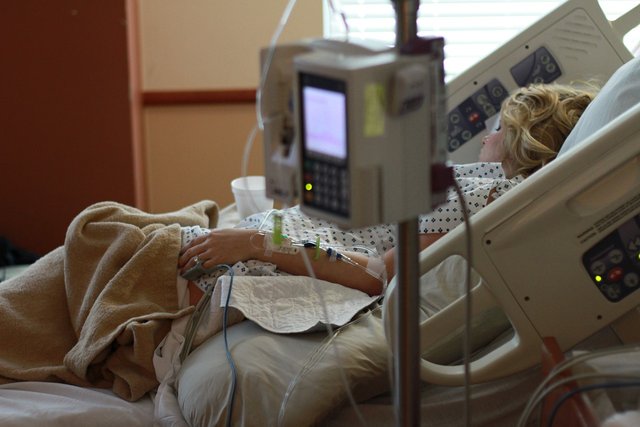WHAT IS SEPSIS?

pixabay,attribution free
We have often encountered the term SEPSIS in news and publications. Some of us unfortunately have real life experience with it directly or indirectly through a loved one. So what sepsis? Medical societies have defined the term in various ways over time which may have little to with substantive meaning of the term. The difficulty lies in giving a definition to a process that eludes any uniformity in clinical presentation or chemical analysis or in magnitude of changes in pathophysiology. I will approach sepsis from a more real life viewpoint. First though let’s look at the current society definition.
The latest definitions were published in 2016.
Sepsis was defined as life-threatening organ dysfunction due to a dysregulated host response to infection. Septic shock was defined as the more severe subset of sepsis in which particularly profound circulatory, cellular, and metabolic abnormalities substantially increase mortality.
SEPSIS EXPLAINED.
There is a constantly evolving ongoing relationship between humans and microorganisms. There are approximately 400 bacterial species living in our gut. We need these to function normally. Depletion of these bacteria can cause serious harm. As an example, when antiobiotics are taken they may kill the normal bacteria in the gut and allow overgrowth of dangerous ones. Clostridium difficile colitis is an example of such as process. Our mouth and skin also harbor organisms that usually are considered a normal part of human existence and don’t cause disease under usual circumstances.
On the other hand under certain conditions microorganisms can cause infections. We have all experienced simple infections such a common cold, acne, an upset stomach or a red eye. An infection can become severe and cause an organ or organ systems not to work properly and can cause other organs and organ systems beyond the organ that was infected primarily, to start malfunctioning as well. For example a pneumonia infecting the lung can cause the respiratory system to fail. One may need supportive measures such as oxygen or ventilators to sustain life. Through complex mechanisms, the kidneys may fail in response to pneumonia even though the kidneys are not directly infected. So in general when an infection becomes overwhelming enough to cause one or more organ/ organ systems to malfunction we called that condition...SEPSIS.
A severe form of sepsis is SEPTIC SHOCK. Septic shock generally is said to exist when blood pressure drops to inadequate levels to maintain proper function of human systems. Untreated it can rapidly lead to death or severe organ damage.
Public Data on Sepsis.
Annual incidence of sepsis in Americans is 1.5 million patients per year. 250,000 of these patients do not survive sepsis. The debilitatation in the survivors has no known accurate data. Most common sites of initial infection is lung (35%); Urinary tract (25%) and Gut and Skin with 11% incidence for either organ.
Trends in Sepsis.
There has been considerable effort put forth by various organizations nationally and Internationally to improve outcomes of sepsis by increasing early recognition and early interventions as well as focus on therapy guidance through guidelines. One such recognizable campaign is the SURVIVING SEPSIS CAMPAIGN. In the past few years, the campaign has had the greatest impact on how we treat sepsis today. There is tremendous effort locally in communities to help patients and families that have suffered the devastating effects of sepsis. One such amazing foundation is BEGIN AGAIN FOUNDATION. Thousands have been helped and the project is ongoing.
We can treat sepsis better now as evidenced by decreasing death rates from sepsis. Unfortunately the incidence of sepsis is growing and this means that more people are dying from sepsis. An NIH public access article is linked here.

source
Pathophysiology of Sepsis.
Sepsis is notoriously difficult to identify and diagnose especially in the early stages. This is the stage where proper treatment can have the greatest impact on outcomes. Yet many patients even in the in hospital setting have great delays in recognition of their sepsis diagnosis.. There may be many factors involved and a comprehensive discussion is beyond the scope of this publication. One complicating factor is that there is no uniform early presentation of findings that can help categorize patients. Sepsis has a wide spectrum of evolving findings as the process progresses and the manifestations are so varied that even defining sepsis has been a struggle. As such you will notice that the recent sepsis definition (see above) is rather generalized.
Many processes happen in a body as a response to infection. We understand a lot about what happens in the body during sepsis and there is a whole lot more that we don’t understand. We don’t understand the varaiations of these processes in individual patients to the extent that we can individualize treatments to any significant degree. I will give you a simplistic overview of some processes now.
The infecting organism may attach to Toll Like Receptors on immune cells. A lot of chemicals known as cytokines (cell signaling proteins) are produced. Some cytokines are regarded as pro- inflammatory and some of these include Tumor Necrosis Factor, Interleukin 6, Interleukin 2 etc. As inflammation progresses increase production of Nitric Oxide occurs. With progressive damage Anti Inflammatory Cytokines and other chemicals are released. Interleukin 4 and 10 are produced and are considered anti-inflammatory. Before we go further, note that these are gross generalizations. It was shown that patients sick enough to be in ICU may not produce significant amounts of Tumor Necrosis Factor or Interleukin 6 in response to toxins produced by bacteria. Theories of sepsis have thus ranged from a Hyperinflammatory response to a Blunted Immune response to infection. A good article on this concept as well as physiology of sepsis is linked here. Okay, so with all these chemicals raging through the body, there is damage to the blood vessels called endothelial damage which activates the coagulation cascade. Cogulation system of the body maintains normal states of clotting and bleeding tendencies. Complex changes occur and the patient may have an exaggerated tendency to bleed and at the same time clotting or thrombosis in the microcirculaction is taking place. What is clinically evident in a patient varies widely. There are many other processes happening all at once which are explained well in this is paper. One of the reasons I like this paper is a line that states: “sepsis is not a definitive disease.” This one line says it all in terms of complexities of diagnosing and treating sepsis.
Treatment attempts and failures.
Attempts were made to blunt the pro inflammatory chemicals, specifically Tumor Necrois Factor and Interleukin 1. Both attempts failed to improve outcomes in sepsis patients. The paper linked here shows these trials in tables 2 and 3.
Attempts were made to stimulate the immune system with the thought that immune response is blunted in sepsis. Granulocyte Colony Stimulating Factor was given. It failed to improve outcomes.
Not too long ago Xigris, a recombinant activated protein C, was used in sepsis. It was felt to have anti inflammatory and anticoagulant properties. Touted benefits were on the microcirculation changes in septic shock. The drug was used worldwide and heralded as a great advance in treatment of sepsis. I personally used it with excellent results. Later data showed no real benefit and drug was withdrawn.
Current Treatment of Sepsis.
It is all about early detection of a disease that likes to evade detection. Although attempts at identifying blood markers to detect sepsis early is an ongoing effort, we do not yet have a perfect marker that is both sensitive enough to detect all sepsis patients and specific enough to exclude al patients that do not have sepsis. The diagnosis is clinical and does require great clinical skills. In this respect an aware patient and an aware physician are both of great value and I hope to raise the awareness of the public through this post.
The earlier sepsis is treated, the better the outcomes. Every hour of delay in sepsis treatment adds 4% to the risk of mortality. Treatment Is directed towards identifying the source of infection, controlling the source, proper early antibiotics and stabilization of blood pressure along with a myriad of various other interventions all carried our near simultaneously or sequentially. It is imperative that patients suspected of having a severe infection be evaluated early for treatment. Don’t sit on sepsis.
What scares me the most is the rapid emergence of antibiotic resistance in bacterias. A sepsis caused by resistant species could have disastrous outcomes.
This is absolutely going to be our key in successful fightback, allowing us a bit more time to to test for sensitivity of the causative organism to different antibiotics, in case they're resistant to the commonly used ones.
Sooner or later there will be scary breakout. I recently had to use colistin in a carbapenem resistant bug. Successful but I rather not do it daily.
Educative, sepsis caused severe hypovolemic shock recently to a patient.
Bt her condition is getting better
Happy to hear that. Thanks for reading.
hello, @nedspeaks. I'm an anesthesiologist from Russia. I search for friends-doctors 😷
@nedspeaks has some great posts. also check out @thethinkingdr
Thanks a lot. I am glad that you enjoy my infrequent posts.
Hello Grozzy. We are now friends.
Congratulations! This post has been upvoted from the communal account, @minnowsupport, by nedspeaks from the Minnow Support Project. It's a witness project run by aggroed, ausbitbank, teamsteem, theprophet0, someguy123, neoxian, followbtcnews, and netuoso. The goal is to help Steemit grow by supporting Minnows. Please find us at the Peace, Abundance, and Liberty Network (PALnet) Discord Channel. It's a completely public and open space to all members of the Steemit community who voluntarily choose to be there.
If you would like to delegate to the Minnow Support Project you can do so by clicking on the following links: 50SP, 100SP, 250SP, 500SP, 1000SP, 5000SP.
Be sure to leave at least 50SP undelegated on your account.
My mother had her PhD thesis about sepsis and I got to learn about it as I helped her with Excel tables, data and Graphs.
Indeed the most important step is the detection since the onset is very fast and debilitating.
Also medical institutions are the ones that need to protect their patients as I remember that in developing countries this was the main source of infection.
Helpful article! Keep it up!
Thanks Alex. We are not faring any better than 3rd world countries because antibiotics are doled out like candies.
Being A SteemStem Member